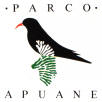|
|
|
|
|
|
|
 |
8th Workshop of Italian Geoparks
"Protection, promotion and management
of the geodiversity"
Pollino
(Italy), 3rd-6th
July 2016 |
|
|
|
|
|
|
|
PHOTO
CHRONICLE |
|
|
|
|
|
|

|
Monday 04.06.2016
First day of the Italian Geoparks Workshop in Mormanno (province of
Cosenza). honourable Domenico Pappaterra, President of the Pollino
National Park, welcomes and greets the guests in the municipal theatre.
|
|
|
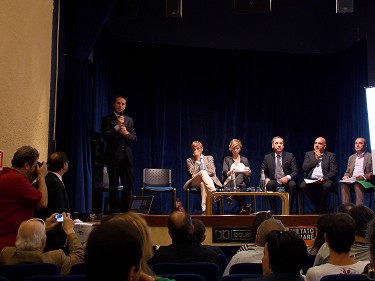
|
Monday 04.06.2016
Dr. Aniello Aloia
(Coordinator of the National Committee of the Unesco Global Geoparks)
during his
welcome address. |
|
|

|
Monday 04.06.2016
Prof. Nickolas Zouros
(President of the Global Geoparks Network)
informs the audience on
the new Unesco programme concerning the Global Geoparks and Geodiversity,
aimed at the effective management of the geological heritage in the
planet.
Pasquale Li Puma is by his side, as precautionary support for the
Italian vocabulary, even because Zouros knows our language very well. |
|
|

|
Monday
04.06.2016
The programme continues with a roundtable on "Geoparks: innovative
tools for the protection and promotion of the lands".
In the picture, honourable Dorina Bianchi (Undersecretary for Cultural
Heritage) explains her ideas on the Geoparks and their cultural value.
The speakers pay attention to this note, except the last one on the
right... |
|
|
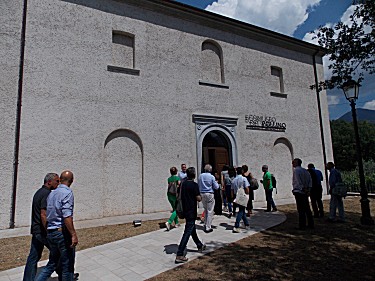
|
Monday
04.06.2016
In the afternoon, the first field trip begins with the visit to the
monumental complex of S. Maria della Consolazione in Rotonda (province
of Potenza). This old buildings hosts the Park headquarters and Pollino Ecomuseum. |
|
|
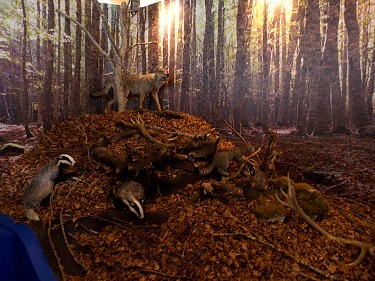
|
Monday
04.06.2016
The diorama of the forest fauna dominates the scene in the central hall
of this Ecomuseum. |
|
|
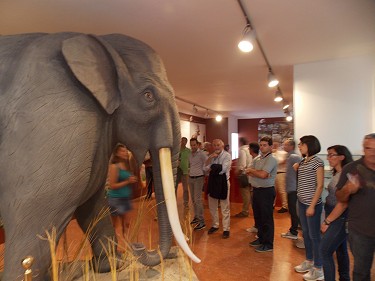
|
Monday
04.06.2016
Another important museum is located in Rotonda, with a temporary
preparation and seat.
It is dedicated to the middle Pleistocene fauna discovered along the
Mercure river basin. The main important bone remains are of
Straight-tusked Elephant (Palaeoloxodon antiquus italicus).
|
|
|
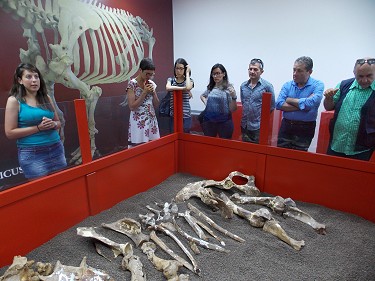
|
Monday
04.06.2016
Further important paleontological record is the European Hippopotamus (Hippopotamus
antiquus). |
|
|
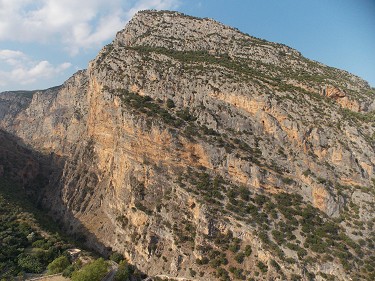
|
Monday
04.06.2016
Second step is in Civita (Çifti), near Castrovillari
(province of Cosenza).
Timpa del Demanio is a middle mountain of ceno-mesozoic carbonate rocks,
above the narrow gorge of the Raganello stream. |
|
|

|
Monday
04.06.2016
The workshop participants posing for the traditional photo. |
|
|

|
Monday
04.06.2016
Civita (Çifti) is a linguistic island of ancient origin.
An Albanian community settled here to escape the Ottoman invasion, in
the late XV century.
The chimney pots of the houses preserve a characteristic signs of material Arbëreshë culture. |
|
|
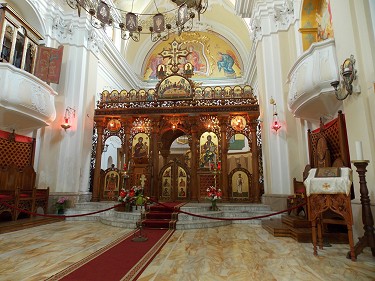
|
Monday
04.06.2016
Internal of the Church of Santa Maria dell'Assunta in Civita (Çifti),
dating back to the XVII century.
in this building, there is a mixture of elements of the Latin and Greek
Orthodox religious tradition. |
|
|

|
Monday
04.06.2016
In the Museum of the Arbëreshë culture, you can see everyday objects,
working tools and traditional costumes. |
|
|
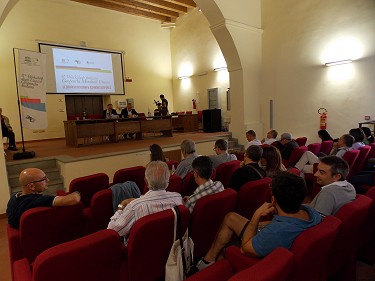
|
Tuesday 05.06.2016
Second day of the Italian Geoparks Workshop in Senise (province of
Potenza). The session "Italian Geoparks and Aspiring Geoparks" is hosted
in the San Francesco monumental complex. |
|
|
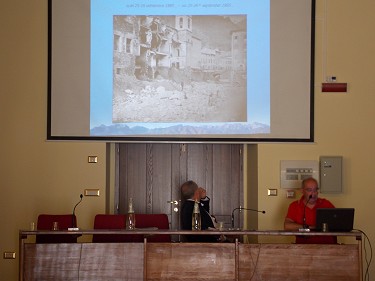
|
Tuesday 05.06.2016
The programme proposes several notes about the management and promotion
of the geological heritage.
Dr. Antonio Bartelletti shows the contribution of the Apuan Alps
Geoparks, written with Alessia Amorfini, Emanuele Guazzi and Giuseppe
Ottria.
The title is "Rains and Ruins: the 1996 Flood between Versilia and
Garfagnana. Twenty years ago in the Apuan Alps: storyboard for the
educational exposition". |
|
|
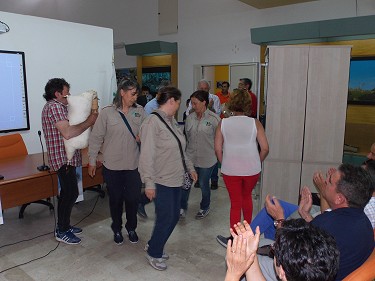
|
Tuesday 05.06.2016
Visit to the Documentation Centre in Terranova di Pollina, "town of the zampogna (italian
double chantered pipe)".
The Park Guides improvise a dance at the sound
of this musical instrument. |
|
|
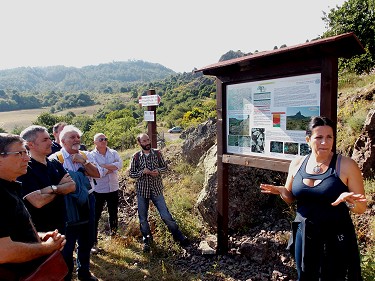
|
Tuesday 05.06.2016
Prof. Giovanna Rizzo (University of Basilicata) leads the geological
field trip in Timpa delle Murge. This location conserves the most
complete ophiolite sequence of the southern Apennines. |
|
|

|
Tuesday 05.06.2016
The top part of this ophiolite sequence presents outcrops of effusive
rocks. They are especially formed by pillow basalts. |
|
|
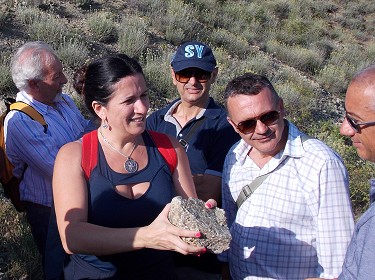
|
Tuesday 05.06.2016
Prof. Rizzo shows her favourite topics on the magmatic intrusions, particularly
active at tectonic plate
boundaries.
|
|
|
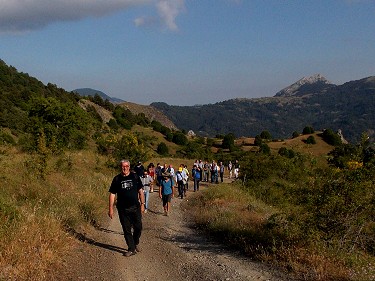
|
Tuesday 05.06.2016
Unexpectedly, dr. Emanuele Guazzi is at the head of the pack...
Today, he is
particularly in high spirits... |
|
|
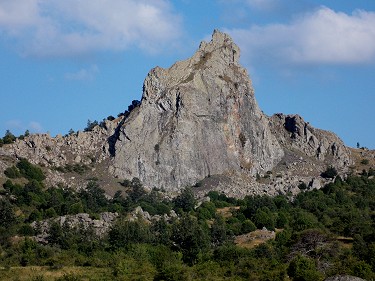
|
Tuesday 05.06.2016
The final part of this field trip sets aside the exciting vision of a monolith
naked by the erosion. The peak of Timpa di Pietrasasso emerges above the flysch
facies (Crete Nere) and outcroppings of serpentinite. |
|
|

|
Wednesday 06.06.2016
The third day of the workshop is completely dedicated to a further field trip.
Prof. Francesco Muto (University of Calabria) leads the geological part
during the first hours of the morning. |
|
|
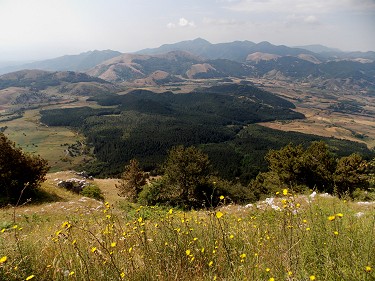
|
Wednesday 06.06.2016
The flat land of Campotenese (province of Cosenza) separates the two
main mountain chains of the National Park: Pollino and Orsomarso. This
big depression has a tectonic and karst origin and it shows the typical
morphology of a polje.
|
|
|
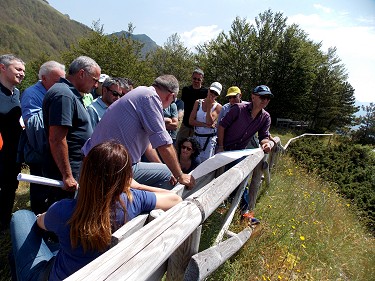
|
Wednesday 06.06.2016
Prof. Muto continues his lesson on the geology of this area. The
geological map is the educational tool used after the interpretation panel
along the road. |
|
|
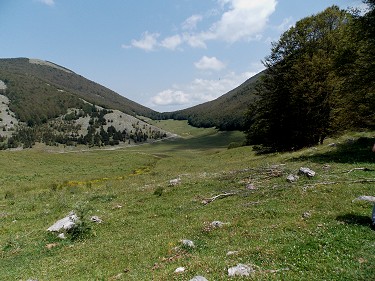
|
Wednesday 06.06.2016
Piano di Ruggio (1535 m a.s.l.) is a large-sized sinkhole of
dissolution, with moraine deposits of a Pleistocenic glacier. |
|
|

|
Wednesday 06.06.2016
The workshop participants walk in a beech wood from Piano di Ruggio to
Belvedere del Malvento. |
|
|
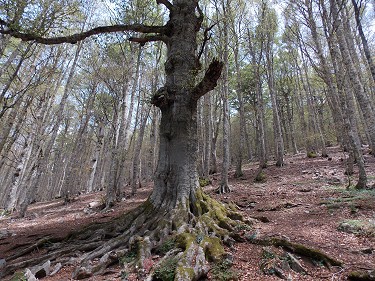
|
Wednesday 06.06.2016
A monumental old tree rises above the wood. Its name is "beech of
the seven sisters", because the popular tradition the considers it the
merger of seven different trees. |
|
|
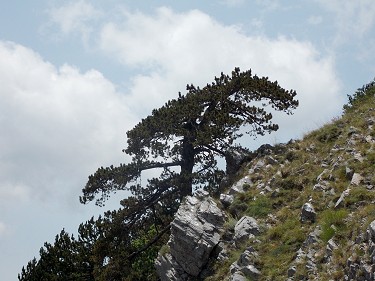
|
Wednesday 06.06.2016
Finally, the workshop participants meet the tree-symbol of the Pollino
National Park in Belvedere del Malvento (1575 m a.s.l.). The Bosnian
Pine (Pinus heldreichii) lives along the steep limestone slopes
of these mountains. |
|
|
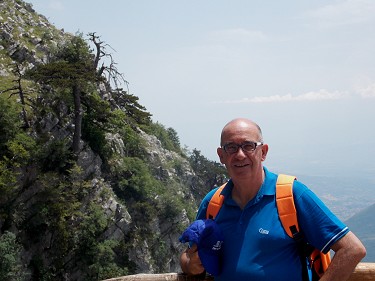
|
Wednesday 06.06.2016
This picture remembers us a little wish finally realized... |
|
|

|
Wednesday 06.06.2016
Common Houseleek (Sempervivum tectorum) is abundant on the lithosols of the Pollino National Park. These localities represent the
southernmost station for this species in Italy. |
|
|
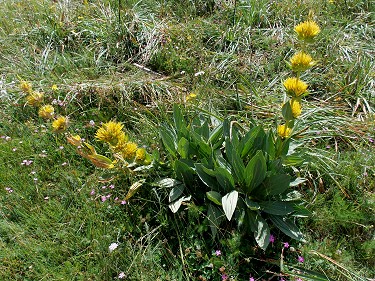
|
Wednesday 06.06.2016
Another elegant herbaceous plant of the Park.
Great yellow Gentian (Gentiana lutea) grows in the alpine grasslands
on carbonatic soils. |
|
|

|
Wednesday 06.06.2016
Further step of the field trip in Romito Cave, Papasidero Municipality
(province of Cosenza)
Prof. Domenico Lovetro (University of Florence) explains the
archaeological stratigraphy of the cave deposits in the little Museum of
the Prehistory. |
|
|

|
Wednesday 06.06.2016
The workshop participants visit this important human settlement dating
back to Upper Palaeolithic. |
|
|
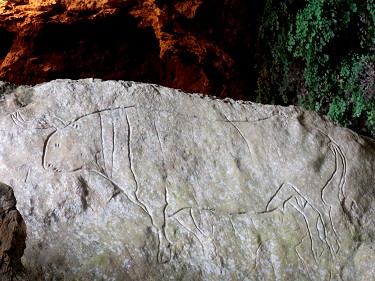
|
Wednesday 06.06.2016
Romito Cave preserves rock carvings representing one of oldest examples
of prehistoric art in Italy (dating back to about 12-14,000 years ago). This limestone
block shows the draw of three Aurochs (Bos primigenius): one large and
two little. |
|
|
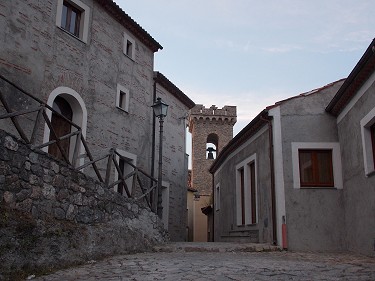
|
Wednesday 06.06.2016
The exciting field trip in the Park ends with a visit to historical center
of Laino Castello (province of Cosenza), today abandoned due to the effects of several
recent earthquakes. |
|
|
|
|
|
|
 go to main page
of the Conferences
go to main page
of the Conferences |
|
|
|
|
|
|
|



































